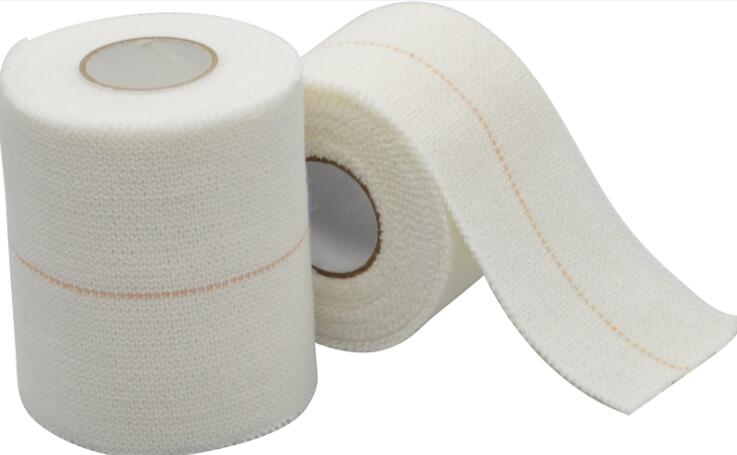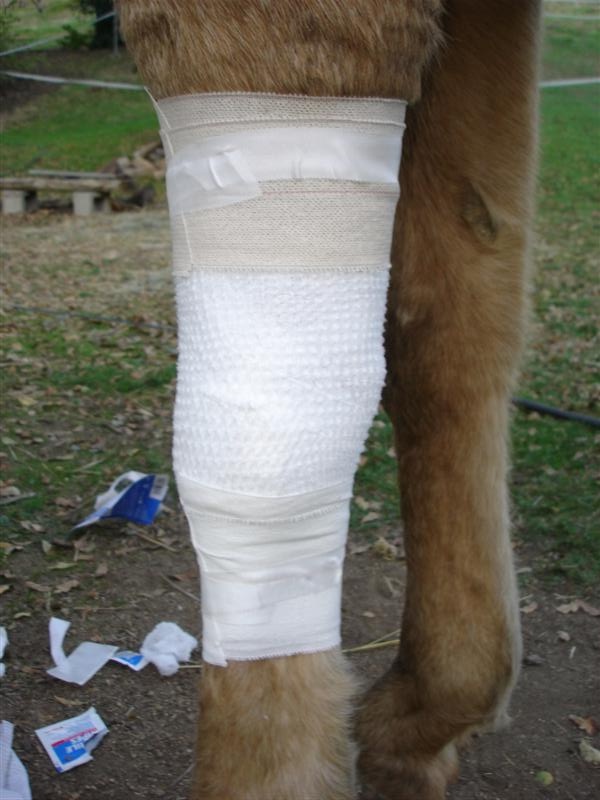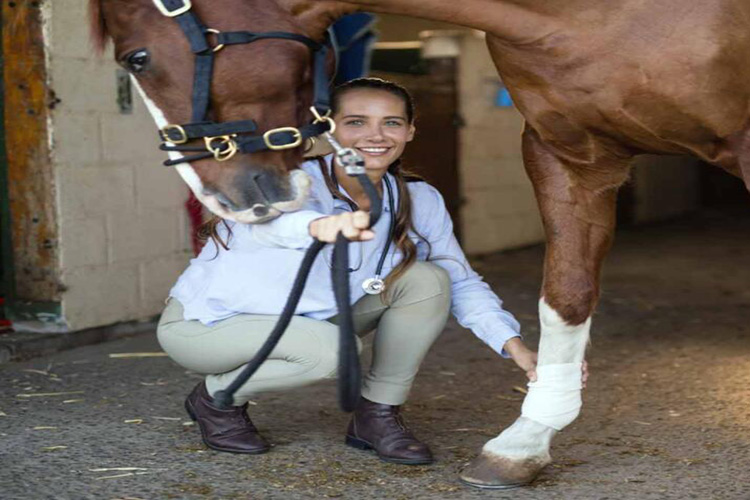EAB elastic adhesive bandage used for securing and protecting dressings over wounds it gives support and compression that reduces the risks of second injuries. This adhesive bandage adheres well over limbs and joints. Superior stretch and regain properties provide good conform ability. Porous, zinc-oxide adhesive that allows skin to breath and reduces maceration, which is vital condition for wound recovering.Bandage remains securely in place with continuous reliable adhesion.

Usage:
when bandaging a horse’s leg, please follow these basic guidelines from the American Association of Equine Practitioners:

- Start with clean, dry legs and bandages. If there is a wound, make sure it has been cleaned, rinsed, and dressed according to your veterinarian’s recommendations.
- Use a thickness of an inch or more of soft, clean padding to protect the leg beneath the bandage. Apply padding so it lies flat and wrinkle-free against the skin.
- Start the wrap on the inside of the cannon bone above the fetlock joint. Do not begin or end over a joint, as movement will tend to loosen the bandage and cause it to unwrap.
- Wrap the leg from front to back, outside to inside (counterclockwise on left legs, clockwise on right legs).
- Wrap in a spiral pattern, working down the leg and up again, overlapping the preceding layer by 50 percent.
- Use smooth, uniform pressure on the support bandage to compress the padding. Make sure no lumps or ridges form beneath the bandage.
- Do not to wrap the legs too tightly, creating pressure points.
- Avoid applying bandages too loosely. If loose bandages slip, they will not provide proper support and may endanger the horse.
- Leg padding and bandages should extend below the coronet band of the hoof to protect that area (this is especially important when trailering).
Extend the bandages to within one-half inch of the padding at the top and bottom. If there is a potential problem with bedding or debris getting into the bandage, seal the openings with a loose wrap of flexible adhesive bandage.For horses use, the following tips is its special features.
Special Features:
- Freely adjust the tightness of the bandages to avoid poor blood circulation.
- No degumming and residue.
- The colored thread in the middle of the bandage offers conveniences for accurate banding.
- They are a porous adhesive so they prevent skin maceration, they let sweat evaporate which allows for air flow.
- Latex free, low allergic reactions caused by Latex and with highly resistant to catching and tearing.

Attention:
- It can only be cut so scissors and Instruments should be prepared before use.
- EAB adhesive works best at room temperature, so your car and cool storeroom is not expected places for storage.
To see more of specifications and materials, our catalogue and website is as followed for your reference.


